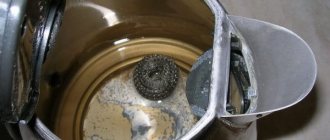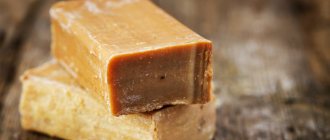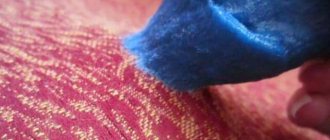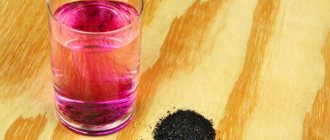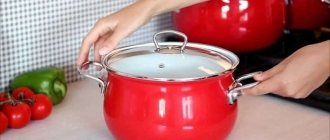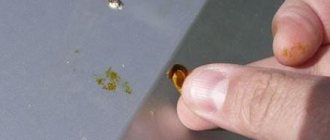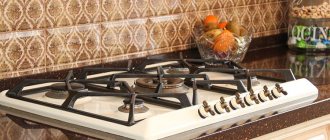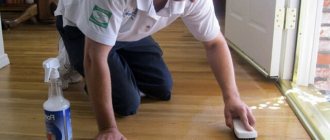Other cleansing methods
A more “civilized” way to combat the nasty smell from plastic is to use specialized detergents. These products usually include various alkaline solutions with water, but they contain surface-active components. Immediately after using such products, it is recommended to rinse your kettle thoroughly, preferably under running water.
We suggest you familiarize yourself with Banana before eating
This must be done, since surfactants and other additives in household chemicals can cause significant harm to your health. In general, people all over the world are now trying to live a simple, eco-friendly lifestyle and use natural cleaning methods with vinegar, soda, lemon and citric acid.
There are more original cleaning methods if your new kettle smells like plastic. For example, cleaning with a bay leaf, which is present in every family, and there is no need to look for it at all. You should use about 20 grams of dry bay leaf per teapot. You should boil water with leaves, leave for two to three hours and boil. After the procedure, boil clean water in your kettle and wash it.
You can clean a new kettle with sauerkraut. Long-standing, especially sour cabbage is especially good for this purpose. You should pour a third of the cabbage into the kettle, bring to a boil, then leave for a couple of hours and rinse. The method of clearing the times of our grandmothers is very original, but quite effective.
To improve the cleaning result, after all the boiling overnight, pour a little ground coffee into the bottom of the kettle without water, pour it out in the morning and rinse the vessel thoroughly.
Tips for use
— Buy enamel cookware of dark colors, it heats up faster than white.
— Temper a new enamel pan before use: fill it to the top with water with salt dissolved in it (2 tablespoons per liter) and bring to a boil. This will prevent the enamel from cracking.
— The technology for making enamel cookware involves applying a thin layer of glassy enamel to a finished mold made of iron or cast iron. Hardened enamel reacts to mechanical shocks. Do not remove food by tapping the edge of the pan with a spoon - this will cause chips and microcracks. For the same reason, you should avoid dropping enamel cookware on the floor.
— The enamel layer is sensitive to temperature changes. Do not pour cold water into a heated pan. This reduces the life of the cookware and leads to cracking of the enamel.
— Enameled cookware has high thermal conductivity, so it is completely unsuitable for preparing dishes with a thick, viscous consistency. When cooking porridge or boiling milk, first pour water over the pan and stir the mass in it continuously - it burns quite quickly.
— Do not use pans with chipped enamel. Due to mechanical stress, small pieces of enamel can get into food and cause serious injuries to the esophagus and stomach. In addition, the opened iron interacts with products, resulting in the formation of compounds hazardous to health.
— If food is burnt to the bottom of the pan, do not use sharp metal objects (knife, wire sponge) to clean it: small scratches thin the enamel and compromise its integrity. It is more effective to fill the pan with cold water with the addition of 2-3 teaspoons of soda and leave for 1 hour.
- If the color of enamel pans has become dull, boil it in water with the addition of any dishwashing detergent and rinse with plenty of hot water.
— Boiling water with the peels of sour apples or adding vinegar will help clean the inside of the pan.
Buying a new high-quality product does not always guarantee its long-term use in the future. Recommendations for using enamel cookware will help maintain the attractive appearance and durability of the coating:
- Before first use, new cookware must be hardened. To do this, pour water with added salt into it (two tablespoons per liter of water) and bring to a boil, after which the water is cooled and drained.
- It is not recommended to expose enamel to strong temperature changes, so you should not pour cold water into a heated pan, and vice versa.
- Enameled dishes with liquid should not be left in the cold. When water crystallizes, it expands and destroys the enamel.
- When cooking, do not tap the edge of the pan with a spoon.
- It is not recommended to place large-capacity enamel cookware on a small burner.
- It is better not to use enamel-coated pans for boiling milk or preparing thick porridges.
We suggest you familiarize yourself with how and how to clean stainless steel at home ·
The service life of enamel cookware depends on proper and careful care. If contamination occurs, you can deal with it using one of the following methods:
- If during cooking the food burns and remains at the bottom of the pan, then metal products should not be used to clean it. You can remove stubborn dirt by soaking it in cold water for one hour with the addition of a few teaspoons of soda.
- To remove heavy stains on the inner surface of the dishes, boil water in it with the addition of citric acid or 9% vinegar.
- Water with the addition of a few drops of dishwashing detergent will help restore the color of darkened enamel. The liquid is brought to a boil, then drained and rinsed with hot water.
How to remove the plastic smell from a new kettle
Sometimes after purchasing a kettle it smells like plastic. More often this drawback manifests itself in electric kettles with a plastic body. There are ways to help eliminate this unpleasant odor:
Soda
The composition of soda has unique characteristics that allow it to be used in everyday life. The product is not inferior in effectiveness to popular chemical dishwashing detergents.
Algorithm of actions:
- Fill the device to the top with water.
- Add 30 g of soda and boil.
- Let the solution stand for 2 hours.
- Clean the kettle using tap water.
- Pour in clean water and boil 2 more times.
This household cleaner is able to neutralize acidity, removing various specific odors.
Lemon acid
A gentle way to solve the problem. This product can also be used to descale an electric kettle. The procedure is quite simple, will not damage the device and will not leave a cloying odor.
- Pour water into the kettle up to the MAX mark.
- Add 50 g of food additive and wait until it boils.
- Leave the composition for 12 hours. In the morning, boil the contents of the device again.
- Drain the liquid and wash the product under running tap water. If necessary, repeat the procedure 2-3 more times.
On a note! An alternative to acid is the juice of 3 lemons, which should be placed in a bowl of water, boiled and left to steep for 2-3 hours, then drained and washed.
Bay leaf
In the fight for health and for the exquisite taste of tea and coffee, the main thing is the quality of water. An unpleasant odor can easily ruin any drink. Bay leaf is considered an affordable and very effective way to solve the problem.
- Send 10 pcs to the bottom of the device. bay leaves and fill with water until full.
- Turn on the button and wait until the kettle turns off.
- Leave for 2-3 hours.
- Once the liquid has cooled, perform the procedure again.
After cleaning, you need to check if there are any leaf particles left in the kettle and filter. Even small branches can add a spicy laurel aroma to tea or coffee. It is better to leave the device with the lid slightly open for a day after washing.
We recommend: Fixing a zipper that comes apart in 5 minutes
Vinegar
Manufacturers of electric kettles do not recommend using vinegar for washing appliances, as it is aggressive. But sometimes you can’t do without this powerful remedy.
- Pour water into the electrical appliance.
- Add ½ tbsp. 9% vinegar.
- Heat the resulting mixture without bringing it to a boil. You should systematically turn the device on and off several times.
- Wash the kitchen product with special care using tap water.
Advice! The smell of vinegar is persistent. To remove it, you may need to boil several portions of clean water.
Sugar
The use of sugar will allow you to instantly and harmlessly cope with a specific odor.
Sequencing:
- Pour in water to the top and turn on the device.
- Add 3 tbsp to the boiling liquid. l. Sahara.
- Let it brew for 10-15 minutes.
- Drain the mixture and wash using clean water.
You can also pour 3 tbsp into an empty kettle. l. sugar and leave for 12 hours without adding water. Then wash the device with clean water.
The advantages of the method are its absolute environmental friendliness, since sugar does not contain chemicals and leaves no odor or residue.
Activated carbon
The property of this drug to absorb odors will also be useful when eliminating plastic fragrances in a new kitchen product. To do this, it is important to know the procedure:
- Place 15-20 naturally occurring absorbent tablets into an empty kettle and close the lid.
- Wrap the device in cling film so that there are no gaps for oxygen to enter.
- Let the kettle stand like this for 24 hours.
- Remove the film, remove the coal from the container, pour in running water up to the MAX mark.
- Boil a new kettle and wash it well after cooling.
Having bought a pack of tablets at the pharmacy, you can instantly solve the problem and be content with hot, delicious tea that will lift your spirits, energize you and give you a lot of positive emotions.
Carbonated drinks
To remove the plastic smell, you can boil a new kettle twice, but use carbonated drinks instead of water. It contains phosphoric acid, which helps not only remove odors, but also clean the device. To do this, take the drink and pour it into a container to the permissible level, boil, drain and rinse and you can enjoy aromatic hot tea.
Attention! It is better to use Sprite, since Coca-Cola and Fanta can leave their own tint on the dishes.
Detergents
If traditional methods cannot cope with the plastic smell from a kitchen product, then you can use very aggressive agents - dishwashing detergents.
Step by step guide to cleaning your kettle:
- Pour water into the kettle to the maximum level.
- Pour in the amount of detergent prescribed on the product packaging. It is important to dilute the composition in accordance with the instructions.
- Boil the liquid and drain immediately.
- Rinse the inner walls with special care with clean water so that chemical particles do not remain on the surface of the device.
The purchase of special products is justified by the fact that they can be used in the further operation of the kettle to free the internal walls from scale.
When treating food surfaces with household chemicals, it is important that the products have a neutral environment and do not contain abrasive particles. They can damage the plastic coating. Also, do not use products with chlorine. After using any chemical, it is imperative to repeatedly rinse the kettle with tap water.
Knowing how to wash a new kettle before first use, you won’t be afraid of the specific smell of plastic. From the proposed options, it is recommended to choose a suitable method that will cope with the task without damaging the kitchen product. Then a perfectly clean device will create an atmosphere of coziness and comfort in the house, and will gather family and friends around the table.
